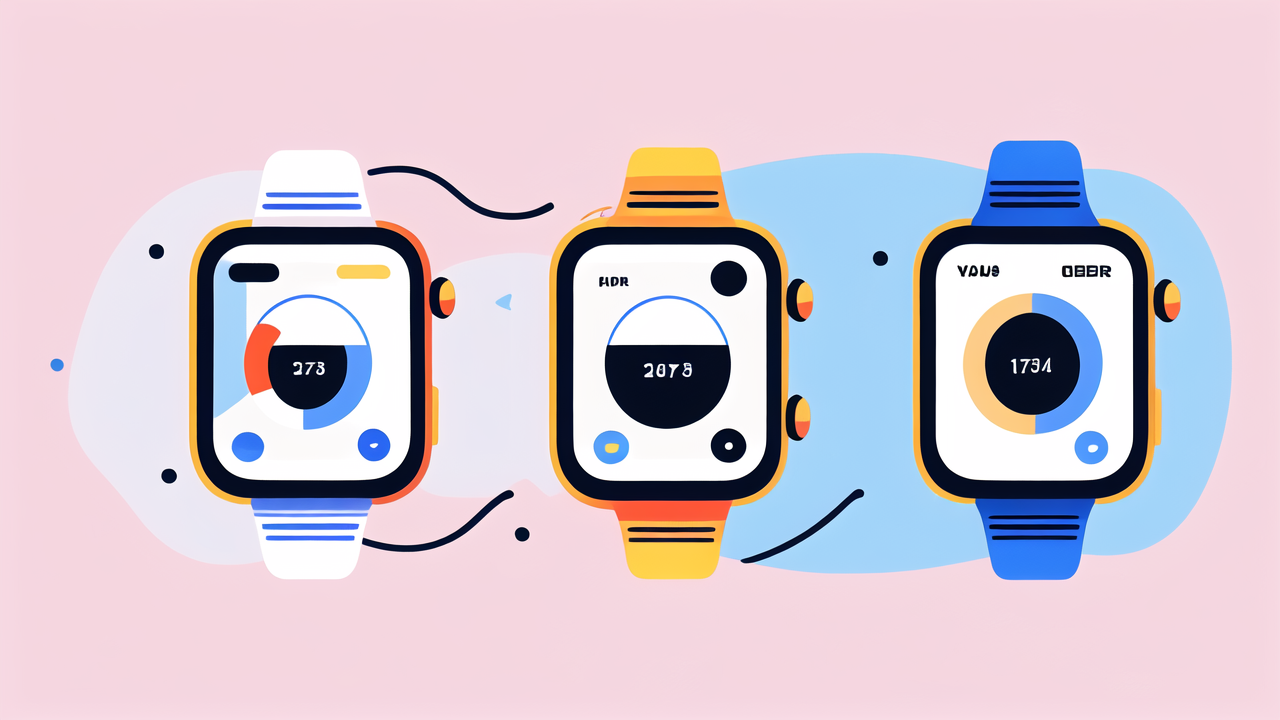Evolution of the Digital Watch: From Novelty to Necessity
The Origins of the Digital Watch in the United States
The digital watch journey began in the US in the 1970s. Hamilton Watch Company unveiled the Pulsar in 1972. It was the world's first digital watch. The Pulsar displayed time with glowing red LEDs. It was a luxury item, costing more than some cars. Early digital watches were expensive and had limited features. They could only show the time and date. But they sparked a revolution in timekeeping. Americans were fascinated by this new technology. It marked the start of a new era in personal electronics.

Milestones in Digital Watch Technology Over the Years
Digital watch technology advanced rapidly over the decades. Key milestones include:
- 1975: The first LCD display watch
- 1983: Casio launches the first calculator watch
- 1994: Timex introduces the first heart rate monitor watch
- 2012: Pebble releases the first modern smartwatch
- 2015: Apple Watch debuts, revolutionizing the market
Each milestone brought new features and capabilities. Watches evolved from simple time displays to complex devices. They gained features like alarms, stopwatches, and fitness tracking. The rise of smartwatches marked a new era. These devices could run apps and connect to smartphones. They turned watches into powerful, wrist-worn computers.
How Digital Watches Became Essential Tools for Americans
Digital watches transitioned from novelties to necessities for many Americans. They offered accuracy and convenience that traditional watches couldn't match. Features like backlighting made them useful day and night. As prices dropped, digital watches became affordable for most people. They became popular for sports and outdoor activities. Runners and athletes appreciated their precision timing. The addition of fitness tracking features made them valuable health tools. Smartwatches further cemented their importance. They offered smartphone notifications, GPS, and more. Today, digital watches are integral to many Americans' daily lives.
AI and Sensor Technology in Modern Digital Watches
AI Integration in Smartwatches: Enhancing User Experience
AI is revolutionizing smartwatches, making them smarter and more useful. AI-powered assistants like Siri and Google Assistant are now common features. They allow users to control their watch with voice commands. AI algorithms analyze user behavior to provide personalized insights. For example, they can suggest workout routines based on past activities. AI also improves battery life by optimizing power usage. It can predict when you're likely to charge your watch. Some watches use AI for advanced health monitoring. They can detect irregular heart rhythms or predict potential health issues. AI makes smartwatches more intuitive and responsive to user needs.

Advanced Sensors in Digital Watches: Measuring Health and Activity
Modern digital watches are packed with advanced sensors. These sensors turn watches into powerful health and fitness devices. Common sensors include:
- Accelerometers for step counting and motion detection
- Heart rate monitors for continuous heart rate tracking
- GPS for accurate location and distance measurement
- Pulse oximeters for blood oxygen level monitoring
- ECG sensors for detecting heart rhythm irregularities
These sensors work together to provide comprehensive health data. They track physical activity, sleep patterns, and vital signs. Some watches can even measure skin temperature or stress levels. The data collected helps users monitor their health and fitness goals. It also provides valuable information for healthcare providers.
The Role of AI and Sensors in Personalization and Security
AI and sensors combine to offer unprecedented personalization and security in digital watches. AI algorithms analyze sensor data to create tailored experiences. They learn user habits and preferences over time. This allows watches to offer customized workout plans or diet suggestions. AI can also predict user needs based on time, location, or activity. For security, AI and sensors work together to protect user data. Some watches use biometric sensors for user authentication. They can recognize the owner's unique heart rhythm or skin contact pattern. AI algorithms detect unusual patterns that might indicate security breaches. This combination ensures that personal data remains secure and private.
The Impact of AI and Sensors on Digital Watch Market Dynamics
AI and Sensor Innovations Shaping Consumer Preferences
AI and sensor technologies are dramatically influencing consumer choices in digital watches. Users now expect more than just timekeeping from their devices. They look for watches that can track fitness, monitor health, and integrate with their digital lives. AI-powered features like smart notifications and personalized insights are becoming standard. Consumers are drawn to watches that can predict their needs and adapt to their lifestyles. Advanced sensors that offer medical-grade health monitoring are also in high demand. These innovations are driving the market towards more sophisticated, multifunctional devices. The line between watches and wearable computers is blurring.

The Influence of AI and Sensors on Digital Watch Manufacturing
AI and sensor advancements are transforming digital watch manufacturing. Manufacturers are investing heavily in R&D to integrate these technologies. This has led to new production techniques and materials. For example, flexible displays allow for curved watch faces. Miniaturization of sensors enables more features in smaller packages. AI is also improving the manufacturing process itself. It optimizes production lines and predicts maintenance needs. This leads to more efficient and cost-effective manufacturing. The result is higher quality watches with more features at competitive prices. However, it also means higher entry barriers for new manufacturers. The complexity of integrating AI and advanced sensors requires significant expertise and resources.
Future Outlook: What's Next for AI-Infused Digital Watches?
The future of AI-infused digital watches looks promising and exciting. We can expect even more integration of AI and sensors. Future watches might include:
- Emotional intelligence features that respond to user moods
- Advanced health diagnostics capable of detecting early signs of diseases
- Seamless integration with smart home systems and IoT devices
- Enhanced battery life through AI-optimized power management
- Augmented reality features for navigation and information display
The trend is towards watches becoming central hubs for personal health and digital interaction. They may evolve into comprehensive health monitoring devices. Some experts predict they could even replace smartphones for many tasks. As AI becomes more sophisticated, watches will offer increasingly personalized experiences. The challenge will be balancing advanced features with user privacy and data security. The digital watch market is set for continued growth and innovation in the coming years.




Leave a comment
This site is protected by hCaptcha and the hCaptcha Privacy Policy and Terms of Service apply.